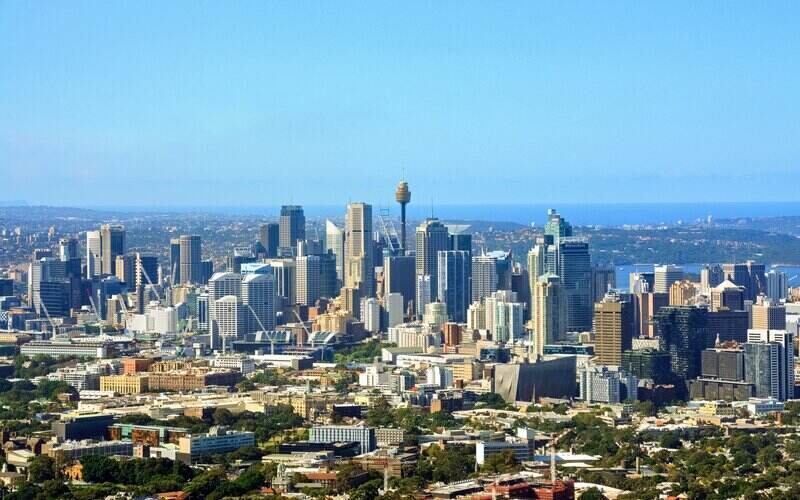The latest Australian Bureau of Statistics (ABS) data points to a 1.7% increase over the September quarter to a record high collective household wealth of $11.4 billion.
Residential assets increased 1.2%, deposits 5.4%, and superannuation balances were up 1.1%.
Average household wealth increased 1.6% to $441,649 per person, and a large amount of it is tied up in housing, with asset values collectively rising $86.8 billion.
Buying a property or looking to refinance? The table below features home loans with some of the lowest variable interest rates on the market for owner-occupiers.
| Lender | Home Loan | Interest Rate | Comparison Rate* | Monthly Repayment | Repayment type | Rate Type | Offset | Redraw | Ongoing Fees | Upfront Fees | Max LVR | Lump Sum Repayment | Extra Repayments | Split Loan Option | Tags | Features | Link | Compare | Promoted Product | Disclosure |
|---|---|---|---|---|---|---|---|---|---|---|---|---|---|---|---|---|---|---|---|---|
5.54% p.a. | 5.58% p.a. | $2,852 | Principal & Interest | Variable | $0 | $530 | 90% |
| Promoted | Disclosure | ||||||||||
5.49% p.a. | 5.40% p.a. | $2,836 | Principal & Interest | Variable | $0 | $0 | 80% |
| Promoted | Disclosure | ||||||||||
5.64% p.a. | 5.89% p.a. | $2,883 | Principal & Interest | Variable | $250 | $250 | 60% |
| Promoted | Disclosure | ||||||||||
5.64% p.a. | 5.89% p.a. | $2,883 | Principal & Interest | Variable | $248 | $350 | 60% |
| Disclosure |
However, the Australian Council of Social Service (ACOSS) has flagged growing inequality, with the wealthiest 20% having 90-times the wealth of the poorest 20%.
The latest research from ACOSS in conjunction with the University of NSW shows the highest 10% of households by wealth also owns nearly half of all household wealth, and ACOSS CEO Cassandra Goldie said the inequality was "stark".
"While the Government did increase income support at the beginning of the crisis, which greatly reduced poverty for a time, it is now threatening to cut income support back to the brutal old Newstart rate," she said.
"The prospect that high levels of wealth inequality may become entrenched after the pandemic is also concerning, as high income-earners save more of their income and investment returns and house prices pick up again, ahead of growth in wages."
However, average wealth is at a record high, according to ABS head of finance and wealth Amanda Seneviratne.
"The September quarter 2020 financial accounts reflected improvements in the Australian and global financial markets, as well as a partial recovery of the domestic economy in response to government and RBA policies, and easing social restrictions across most of Australia,” she said.
Asset values recouped the losses seen in the June quarter, and demand for credit hit a record $154.9 billion - up $3.8 billion on the last quarter.
The ABS also cites JobKeeper, extra welfare payments, and early access to super, as well as tax refunds, as continuing reasons for elevated wealth levels.
The household savings ratio remained elevated throughout most of 2020.
Finding 'good' jobs
UNSW professor Carla Treloar pointed to the problem of finding and restoring full-time jobs.
“While the number of part-time jobs has recovered to its pre-COVID level, so far only one third of full-time positions have been restored. This will exacerbate income inequality as government income supports are wound back,” she said.
This coincides with the latest jobs data indicating the unemployment level fell 20 basis points to 6.8% in November.
Youth unemployment was also 15.6%, and underemployment fell one percentage point to 9.4%.
Approximately 183,000 full-time jobs were added in the past two months, which accounted for two thirds of the employment increase over the period.
Will COVID-19's legacy be one of increased inequality? This recession differs from past ones - in general, high paying jobs have remained relatively secure, while low paying ones have borne the brunt of the crisis #ausecon pic.twitter.com/sRL7bpzCm1
— Felicity Emmett (@felicity_emmett) December 9, 2020
Photo by Louis Hansel @shotsoflouis on Unsplash

Ready, Set, Buy!
Learn everything you need to know about buying property – from choosing the right property and home loan, to the purchasing process, tips to save money and more!
With bonus Q&A sheet and Crossword!





.jpg)

 Denise Raward
Denise Raward

 Harry O'Sullivan
Harry O'Sullivan
 Alex Brewster
Alex Brewster
 Aaron Bell
Aaron Bell

